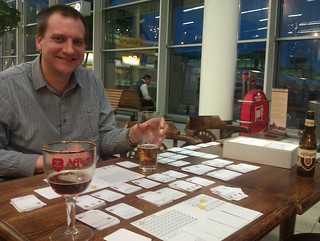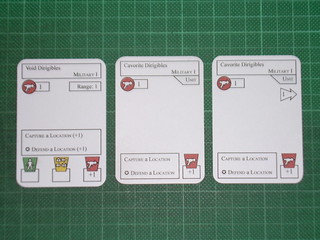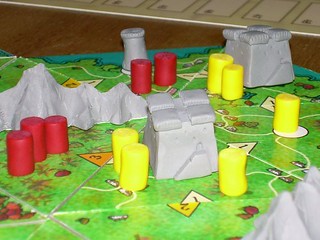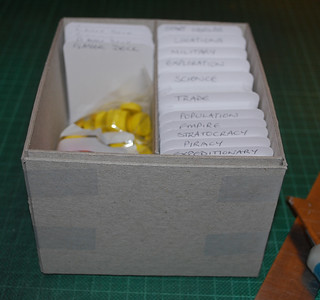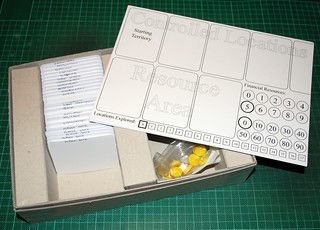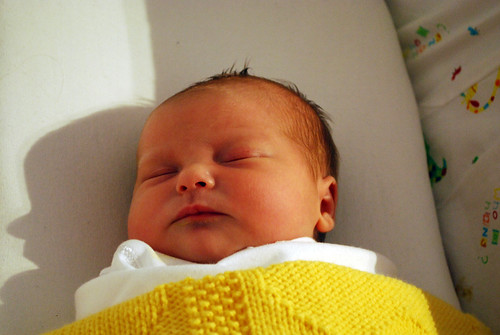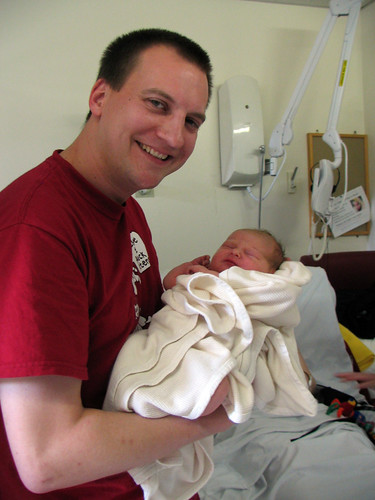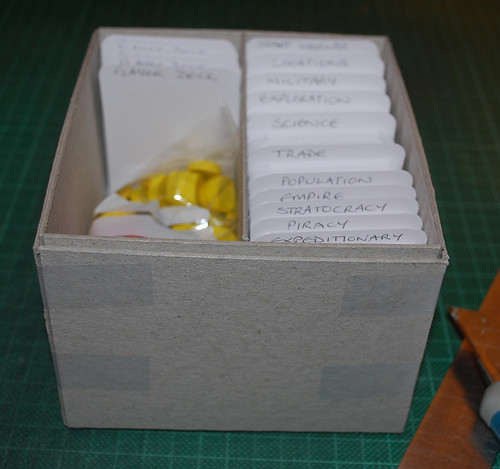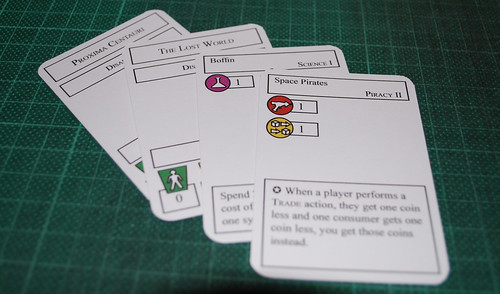2012 has been a momentous year for me in a number of ways. I became a father back in August and that's been very hard work, but also very exciting and great fun already with the promise of lots more fun to come. I moved back to Newcastle at the end of last year so it's been my first full calendar year in Newcastle since 2004 and my first full calendar year in full-time employment with same employer since 2007. We bought a house in March and a car in December. And I visited Canada for the first time. But probably the most relevant thing in this forum is that it was the year I re-kindled my love of Game Design.
Games Design
I had the idea for Codename: Vacuum during a discussion with The Wife during a long car journey at the end of November last year. In just over a year it has gone from concept to a fairly solid prototype (with another almost ready to print), and interestingly it hasn't changed a huge amount. The concept is still the same (though the setting has changed very slightly) and the main mechanics and actions are still as originally envisaged. I'm pleased with how Codename: Vacuum is progressing and hope to get it to a print-ready stage by the end of next year when I'll have to make a decision about whether it's good enough to
proceed with and, if it is, whether to try KickStarter or hawk it to established publishers. Exciting times once again.
Back at the beginning of the year had an idea for a little card game (Codename: Proteome) to make as a conference giveaway from my current employer. After an initial burst of interest in the office this one completely fizzled out. It's a shame but, especially now that I have a daughter to look after, I'm very pushed for time so focussing on a single game is a way to ensure that something gets done rather than negligable progress on half a dozen things.
Finally, in November I had an idea for another game (Codename: Vengeance) which co-incided with NaGaDeMon. It was to be a worker placement/area control game conceptually based on the old Populous computer games. The announcement that Peter Molyneux was going to KickStarter to fund a re-imagining of Populous put paid to that idea too, but silver lining: I've only really got time for one game anyway, so Vacuum benefits from that idea falling by the wayside too.
General Gaming
From a general gaming point of view it's been a surprisingly good year. I've not got to any conventions or trade shows, but I've managed a fairly regular games night that suffered only minimal disruption around the house move and the birth of our daughter. I've played 328 games, a large number of which were on the iPad while travelling for work (I've decided rather arbitrarily that games on an iPad against human opposition count towards BGG play stats). My five and dimes were:
- 25: No Thanks! - One of our favourite fillers at Games Night
- 24: Race for the Galaxy - A perennial favourite at Games Night and with The Wife
- 23: Ingenious - All played on the iPad with Mal on our trip to Denmark
- 22: Codename: Vacuum - Getting somewhere with this
- 22: 7 Wonders - Still loving this, simple and quick, but still interesting
- 15: Carcassonne - One of my favourite games for nearly 10 years
- 15: The Resistance - Battlestar Galactica, but playable in an hour - awesome!
- 13: 11 nimmt! - Popular at Games Night
- 13: Hey, That's My Fish! - Mostly on the iPad on planes to and from Vancouver
- 11: Hol's der Geier - I'm loving this very simple, yet devious, filler
- 10: Stone Age - Popular at Games Night and with The Wife
- 9: 6 Nimmt! - Another Games Night filler
- 7: Ave Caesar - Vicious and quick race game
- 7: For Sale - Another Games Night filler
- 7: Guess Who? - With my niece over Christmas
- 6: Army of Frogs - All on the iPad
- 6: Coloretto - Bought in Vancouver at Starlit Citadel
- 5: Guillotine - Bought in Vancouver at Starlit Citadel
- 5: Lords of Waterdeep - Very popular worker placement lite game with a D&D theme
- 5: Lost Cities - Huh? I don't remember playing that 5 times!
- 5: Thunderstone - much prefer this to Dominion, themed up to the nines (and I've a boatload of expansions)
With the bigger house and my own Games Night for the first time, I've bought quite a lot of games this year: Coloretto and Guillotine in Canada, Cleopatra and the Society of Architects, Clans, Tigris and Euphrates and El Grande cheap from a friend plus: The Resistance, K2, Hansa Teutonica, Village and Divinare. I've also bought Army of Frogs, Ingenious and Through the Desert on the iPad. A disappointing number of the real games have yet to hit the table.
Blogging
After the fallout of Reiver Games, my blog had slowly withered and died over the last couple of years. I started it back up last November after having the idea that became Codename: Vacuum. I posted a few times through January and February, and then it went quiet again during and after our house move. I started it up again in August (the week before my daughter was born) and have been posting pretty much weekly ever since. I've managed 27 posts this year, including one that was picked up by BoardGameGeek News and then Reddit and went on to become my second most read post ever. That month (October) went on to become my month with the most page views ever, eclipsing the early days of my blog. Of course, after the Reddit storm died down page views are back to normal, but still ticking over nicely. My most popular posts this year have been:
- A review of Reiver Games (the one that was posted on Reddit)
- A dumbass question for aspiring board game artists
- A discussion about a possible commercial design (which is dead in the water)
- A first look at Codename: Vacuum
- A discussion of my gaming tastes and how that affects my games design
Here's hoping that next year will be as good! Until then, Happy New Year!

